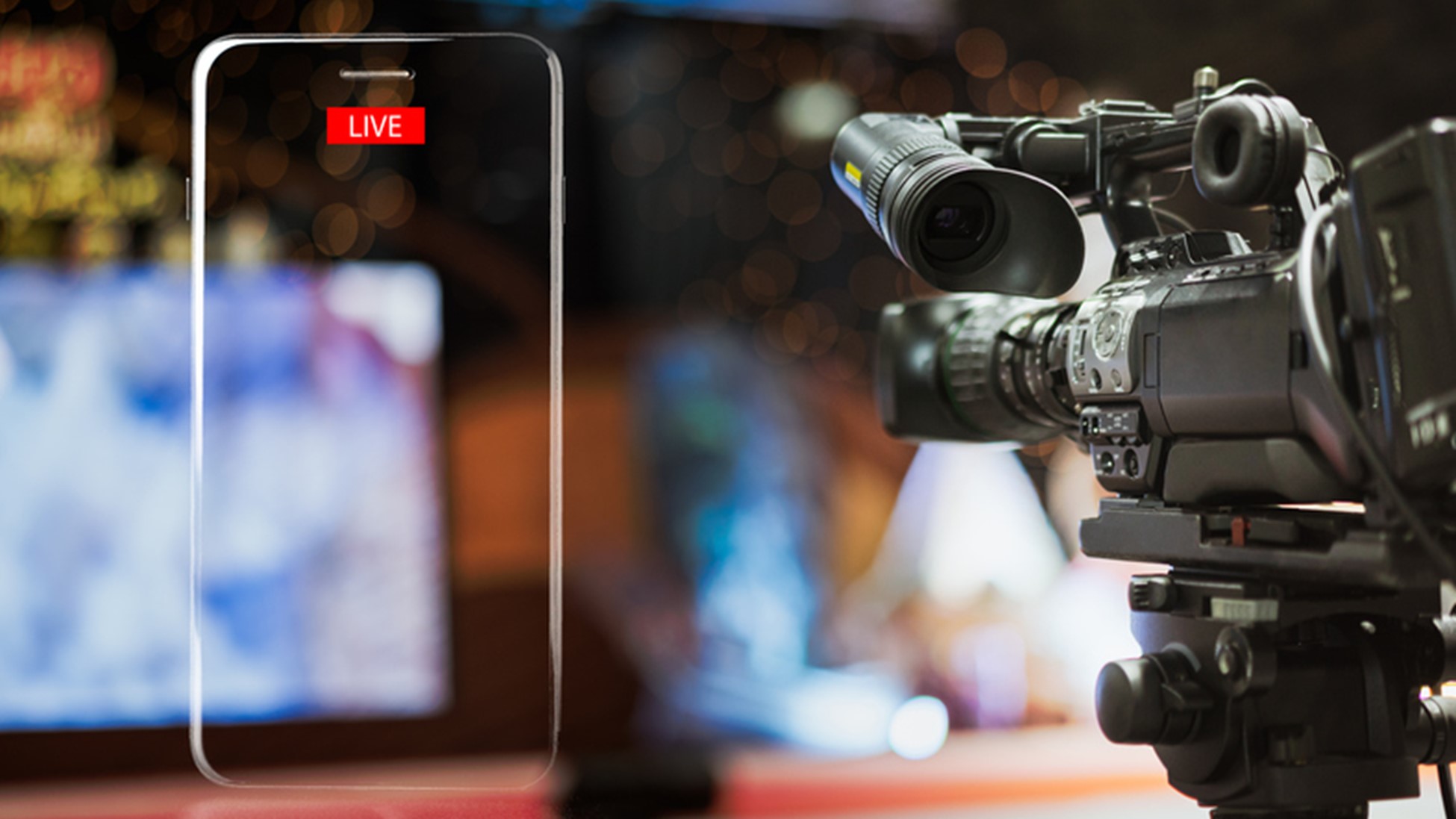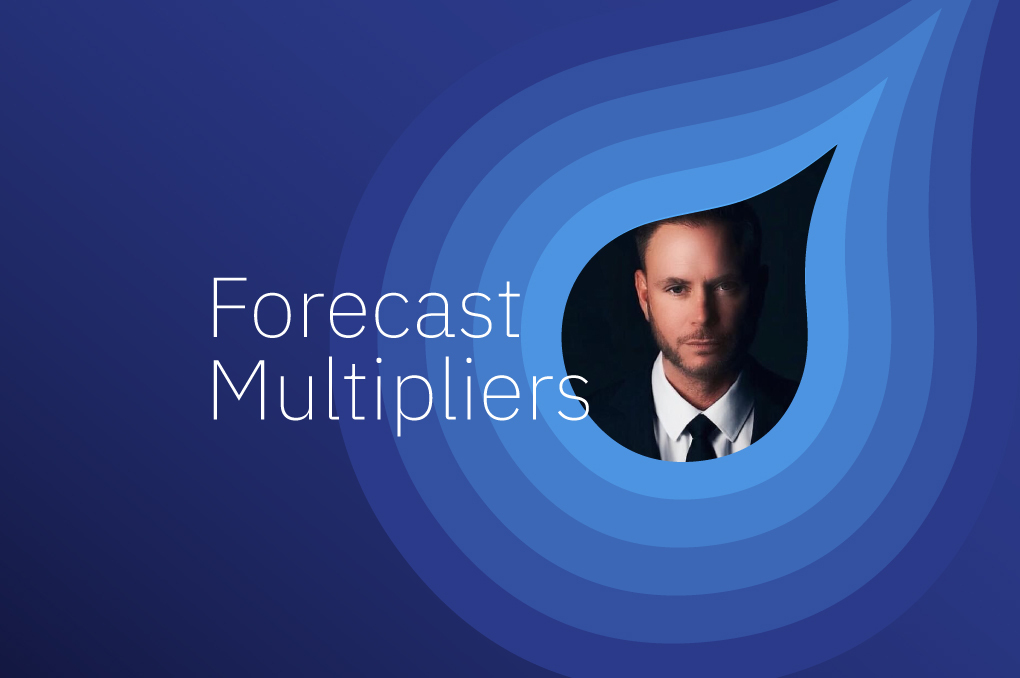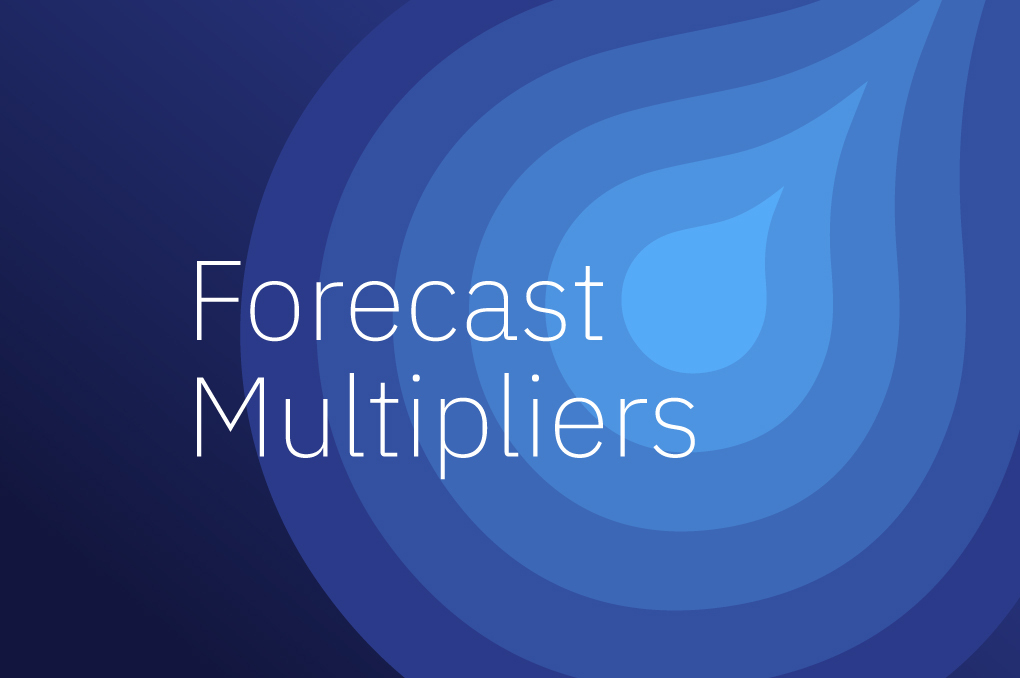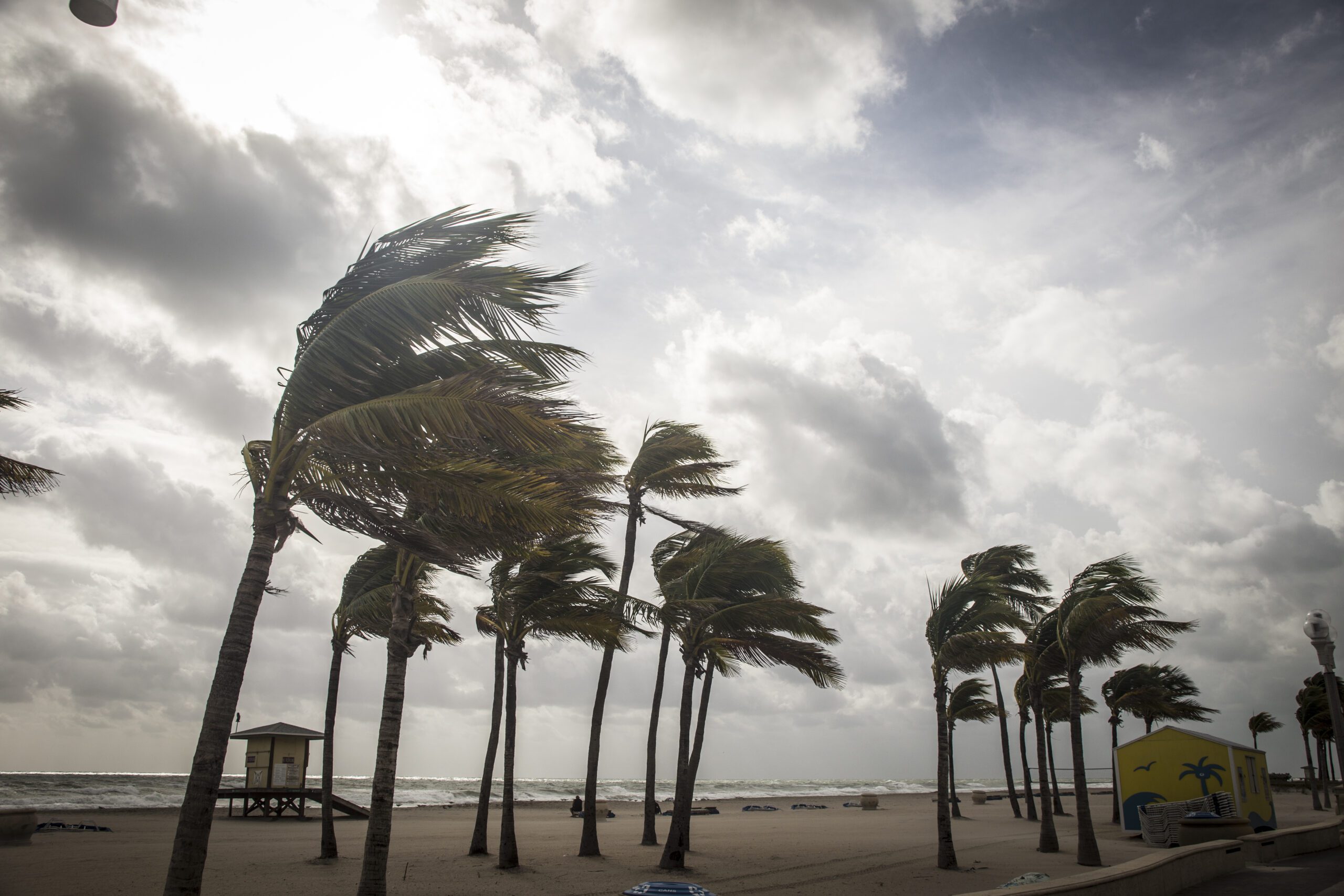Cannes 2024: Weather’s impact on the Croisette and beyond
Continue readingExtreme weather events pose threats to the local community. When storms form and move quickly, they can endanger human life and property, while making it difficult for broadcasters to communicate updates in real time.
Fortunately, an effective emergency weather alert system can help people stay safe. Designed to provide early notice about impending severe weather, and give people the time needed to evacuate or prepare, emergency weather alert systems can save lives and help viewers prepare for severe weather.
After understanding what they are and how they work, there are many ways for you to incorporate emergency alert systems into your broadcasts to tell a complete and accurate story.
What is an emergency weather alert system?
An emergency alert system makes it easy for broadcasters to send out real-time and automated weather information so communities can stay up to date. According to a survey conducted in cooperation with Magid and The Weather Company, viewers prefer to receive severe weather alerts across various platforms, including mobile apps (38%), local television (37%), websites (14%) and social media (12%).
As a result, organizations need to automate as much as they can to ensure that alerts are getting to their viewers. With the right solution, broadcasters can integrate data directly from the National Weather Service to create banners with lifesaving information at the bottom, top or side of television reports. High-quality weather graphics and maps should also be included as an option to provide viewers with strong visuals of affected areas.
When are emergency broadcasting systems used?
Emergency broadcasting systems are used in the event of severe storms, where damage can be expected. With climate change affecting weather patterns, it’s more important than ever for broadcasters to establish a system of updating their communities. The 2020s have broken records for billion-dollar weather events, with 2020 seeing 22 of these destructive storms and 2022 seeing 18.
What goes into an emergency weather alert?
The following components can be included in a severe weather alert:
1. Crawl messages.
The crawl message is the full text of the message, which appears as a text or a screen crawl (if the event is broadcast on TV).
2. Weather graphics and maps.
To provide accurate, real-time information for viewers, most emergency weather alerts include hazard areas that outline each area’s level of risk, depending on the nature of the impending weather event. Visuals can also help viewers assess their risk levels and better understand the data. A storm track or zoom-in on the affected DMA could also be used as well as street-level mapping.
3. Current radar.
For more detail, alerts could also include an animating current weather radar.
4. Additional weather data.
Depending on the nature of the weather event, the emergency weather alert may also include additional weather data such as the projected timeframe of the weather event or natural disaster, next steps, and agencies to contact for more resources or information.
What types of storm alerts can an emergency broadcasting system provide?
In most cases, the National Weather Service (NWS) issues Wireless Emergency Alerts (WEA) for upcoming events like tsunamis, tornados, flash floods, hurricanes, typhoons, dust storms and extreme wind events.
Here’s a detailed breakdown of different kinds of weather alerts:
1. Tornado
Tornado storm alerts come in the form of tornado watches and tornado warnings. A tornado watch advises people in the watch area to be prepared and to know that tornadoes are possible.
On the other hand, a tornado warning alerts people in the watch area that a tornado has been visually identified or confirmed on weather radar. This warning is an urgent call to take shelter on the home’s lowest floor and wait for further information or instruction.
2. Thunderstorm
A severe thunderstorm warning is issued when a thunderstorm capable of producing hail 1 inch or larger in diameter and winds of greater than 58 mph are predicted.
This warning encourages people in watch areas to seek shelter immediately since severe thunderstorms can also produce tornadoes and other weather events.
3. Hurricane
Hurricane warnings indicate that a specified area is expected to experience hurricane conditions – defined as sustained winds of 74 mph or higher.
4. Flood
Flood warnings are issued when a hazardous weather event is expected to create imminent flooding. Flood watches and advisories, however, are issued when flooding may threaten life or property or when conditions are favorable for flooding.
5. Tsunami
The National Weather Service issues tsunami warnings when tsunamis with the potential to generate flooding are expected or actively occurring. Likewise, tsunami advisories and watches caution people that tsunamis are possible and that precautions should be taken.
6. Blizzard
Blizzard warnings indicate that blizzard conditions – defined as low visibility, falling or blowing snow, and winds of 35 mph minimum – are expected for the coming three hours.
What are common issues with an emergency alert weather system?
While emergency alert weather systems are convenient and potentially lifesaving, there are some issues associated with using them.
Here are several factors that broadcasters should be aware of and cautious about:
1. Switching systems
While emergency alert weather systems should deploy rapidly, speed and reliability aren’t always a given. Instead, stations may find themselves switching between different systems to provide critical warnings.
This can create bottlenecks and operational difficulties as well as roadblocks when it comes to providing effective, accurate weather graphics that deliver to-the-minute information while maintaining a broadcaster’s branding.
2. Accuracy
Weather conditions change rapidly, and it’s essential to ensure that emergency alert weather systems are providing the most accurate, updated information possible.
Fortunately, a system like Max Alert Live integrates its data with the National Weather Service, which guarantees that weather alerts are always as accurate as possible at any given minute.
3. Speed
When a severe weather event is imminent, it’s critical to get weather alerts out as quickly as possible. Unfortunately, this can be difficult to do if a broadcaster must create and recreate weather alerts from scratch. Because of this, we recommend working with a platform that allows creators to template and trigger weather alerts, which makes for easy, fast deployment.
4. Consistent messaging
Finally, weather alerts must remain on-brand for broadcasters. Again, this is difficult to achieve if every weather alert is created from scratch. By working with an emergency alert weather system that allows for customized broadcast templates to match your brand, you can push quick, accurate, timely and on-brand weather alerts whenever you need them.
What are the benefits of choosing the right emergency alert weather system?
There are many ways in which choosing the right emergency alert weather software helps you and your broadcast network. Here are a few of the top benefits:
Keep viewers safe
Accurate emergency alert weather systems keep viewers safe while also encouraging community well-being. According to our research report with Magid, when there is severe weather, mobile apps and local TV tie for the preferred source for coverage. Local TV is driven by trust, accuracy, and hyper-local and live coverage. Viewers also noted that they want local alerts on streaming services and more detailed updates on severe weather. Communities depend on their news stations to provide accurate information and broadcasters can help viewers by investing in tools that make these updates easy to communicate.
The automation, templates and integration associated with good emergency weather alert systems allow you to go to air faster and deliver essential weather information to your viewers.
Build audience trust
Accurate emergency alert weather systems also work to promote brand loyalty. By using easy-to-understand and eye-catching graphics that correspond to your brand, you can help reassure an audience that your broadcast network is a name they can trust. By using these graphics alongside maps, your viewers can get a more complete picture of the severe weather coming their way, and better prepare.
With a service like Max Alert Live, broadcast networks can show English or Spanish text depending on the audience and use QR codes alongside a weather alert system. This allows your viewers to scan the code to learn more about the alert or warning, and what areas it is currently affecting via the station’s mobile app. It provides a more comprehensive view that has your viewers returning for the most accurate and descriptive information available.
Streamline workflow
Accuracy and speed are critical when it comes to weather alerts. Fortunately, choosing the right emergency weather alert system allows you to automate weather forecast alerts based on threat levels and risk areas, which is a great way to deliver critical information faster and more efficiently. With the right system, teams can also decide which alerts should be automated and which should be created manually based on the severity, which helps optimize the broadcast workflow.
In addition, cloud-based tools remove many of the roadblocks and bottlenecks from traditional emergency alert weather systems by making alerts easy to create and publish – no matter where you are or who is creating the content. Meteorologists can easily log in anywhere as long as they have an internet connection to create triggers to alert their community.
When severe storms hit, it’s common for internet services to be disrupted. Fortunately, you don’t need to worry about this if you’re working with a service like Max Alert Live. With this type of platform, you can trigger weather notifications locally, which helps ensure viewer safety and up-to-the-minute information, no matter what.
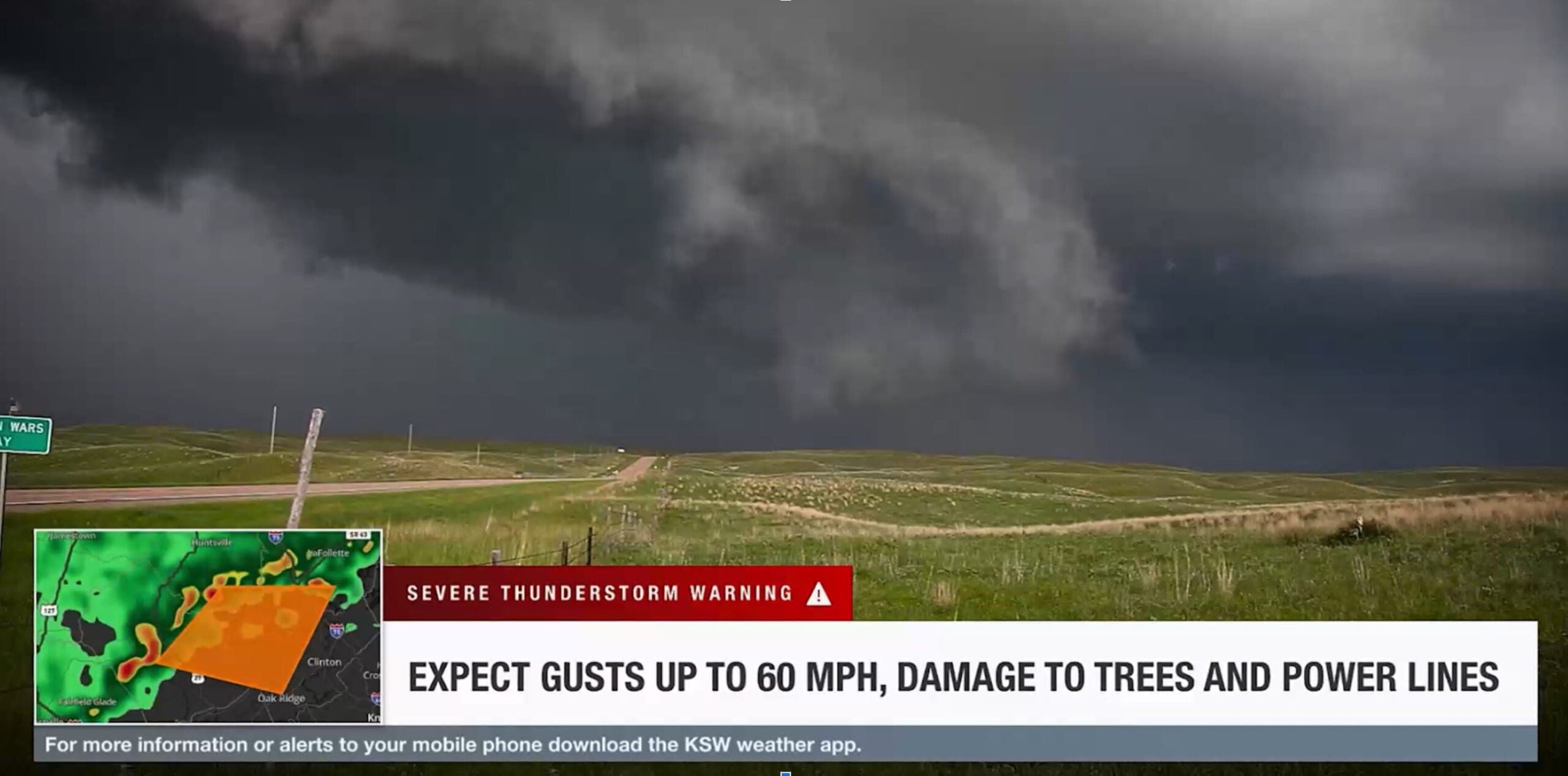
Create engaging and effective emergency weather alerts with Max Alert Live
Want to learn how to create engaging, effective emergency weather alerts with Max Alert Live? Follow these five smart steps:
1. Set trigger conditions beforehand
Make your alerts easy to create and publish by defining trigger conditions before you need them. Trigger conditions are the conditions under which your system will auto-generate weather alerts and send them out to your audience.
2. Customize your alerts
Again, make the most of automation. To simplify the process of sending out weather alerts, customize your alerts before it’s time to issue them. This means altering appearance, messaging and branding so that the alerts match your station branding and ensuring you’re adding relevant language, design and more.
3. Incorporate automation
Once you’ve set trigger conditions and customized your alerts, automate them so they go out without you or a member of your team having to issue them manually. This is, by far, the best way to deliver accurate, real-time weather alerts for viewers.
4. Create dynamic graphics
Weather is inherently dynamic, and your weather alerts should be, too. For best results, we recommend including maps, storm tracks, QR codes and more so viewers better understand the potential impact.
5. Match alerts with on-air appearances
Finally, use weather alerts to enhance and complement on-air appearances. This may mean including guest experts, bringing in sponsors, or running alerts in conjunction with other on-air appearances. This helps your station tell an engaging and seamless story.
Final thoughts
When it comes to keeping viewers informed, emergency weather alerts are an especially critical tool. Despite the importance of these alerts though, they can be difficult to use. Fortunately, it’s easy to overhaul your broadcasts and make them more effective by incorporating a good weather alert system into your technology stack. Max Alert Live allows you to customize, automate and integrate your weather alerts, which helps you serve your viewers, keep people safe and encourage viewer loyalty.
Let’s talk
To learn more about our professional weather and traffic software solutions for the media industry, contact our media experts today.
Contact usHeat waves. Large storms. Droughts. Recent studies suggest that extreme weather events like these will continue happening more often and with increasing severity.
As extreme events grow in frequency and severity, where will people turn for important information?
Research from Magid and The Weather Company revealed that when severe weather strikes, 38% of people use a mobile app to get information because they see it as quick, convenient and accurate. 37% choose local TV because they view it as a trusted resource that is both more accurate and updated than other sources. Websites and social media followed with 14% and 12%, respectively.*
Best practices for severe weather
Excellence in severe weather coverage is critical for several reasons. Obviously, broadcasters have an inherent responsibility to help keep viewers safe by clearly and accurately sharing information about potentially dangerous weather.
In addition, severe weather coverage may be your best chance to gain viewers. Our study found that weather is the number one reason that people watch a local newscast. When there are no severe conditions, viewers are far more likely to use a mobile app (51%) than a local TV newscast (24%) to get weather information.
However, 50% of viewers don’t necessarily have a “preferred weathercast,” meaning that half your available audience during extreme weather is open to trying a different station.
Following these best practices can help your severe weather coverage rise above the competition and increase viewership in these moments of both responsibility and opportunity.
1. Get to air faster with automated alerts
Overcome the perception that mobile apps are quicker by being first to air with crucial and potentially life-saving information as soon as it happens.
Implement a severe-weather alerting system that automatically triggers messages across the bottom of the screen when severe weather conditions occur. However, you should also ensure that you aren’t sacrificing speed for accuracy.
2. Create easy-to-understand graphics and presentations
Our research found that viewers want simple, uncomplicated explanations about why certain weather events are happening and how conditions are changing. This includes better and easier-to-understand weather maps and graphics, especially during severe weather.
Along the same lines, survey respondents said they want weathercasts to stop using confusing presentations.
3. Focus on key insights and takeaways
Ensure that your weathercast is focused solely on what’s important to the people watching. Respondents said that they want the weathercast to help them prepare for what’s coming based on where they live.
Viewers also said they’re tired of “unnecessary chit-chat” and would instead prefer more “weather news.”
4. Keep viewers informed across channels
Severe weather is clearly a catalyst that causes many viewers to count on the local TV weathercast when they would otherwise likely get their weather information from an app.
Your station should be the source for both by creating a mobile experience that complements and extends your on-air severe weather coverage. This can include interactive features like a QR code driving viewers to get more information on their app and additional video content that features your trusted on-air personalities, takes advantage of your local expertise and maintains your station branding.
5. Enable remote accessibility
Severe weather doesn’t always happen when we’re ready. But meteorologists no longer need to be at the station to create and deliver high-quality weathercasts.
Implement remote broadcast video production tools that are based in the cloud and allow meteorologists to log in from anywhere with an internet connection to view the current situation, choose trigger conditions and control the output to viewers.
If a station goes off-air due to inclement weather or power outages, these cloud-based production tools can empower your teams—or even those at sister stations—to still provide critical updates to viewers without much interruption.
Explore Max products
Max solutions from The Weather Company are designed to help you deliver faster, more accurate and more engaging weather forecasts to viewers. Backed by data from the world’s most accurate forecaster overall,** these products can help you stand out from the competition and increase viewership during times of severe weather.
Our on-air alerting solution, Max Alert Live, enables stations to more rapidly broadcast severe weather news with customizable automated alerts. Using a direct integration with the National Weather Service, Max Alert Live automatically triggers messages that scroll across the bottom of your presentation when predetermined weather conditions occur.
This cloud-based solution also allows meteorologists to log in from virtually anywhere to view the current situation, choose trigger conditions, create graphics and decide where to send information.
For digital alerts, Max Engage automatically creates and distributes weather and traffic alerts and videos to impacted users when predetermined thresholds are met. Stations can feature your trusted on-screen talent in both audio and video content to provide relevant local context, such as how weather or traffic may affect upcoming events in the area.
Let’s talk
To learn more about our professional weather and traffic software solutions for the media industry, contact our media experts today.
Contact us* Research conducted by Magid, commissioned by The Weather Company; online survey conducted in May 2022 of 600 weather-information consumers; results published internally.
** Global and Regional Weather Forecast Accuracy Overview, 2017-2022, ForecastWatch, commissioned by The Weather Company.
Why care?
Advertising has the power to shape society and drive our economy. Industries with far less influence and reach than ours are being held to a higher standard when it comes to addressing bias at the core. It’s time for the advertising industry to hold itself accountable.
We’ve made significant improvements to eliminate deep-seated prejudice and inequality. The creative we see today, for example, is far more balanced and representative of all consumers versus the chosen few that were historically featured.
However, the same level of effort has not been applied to the advertising technology that enables connections between brands and consumers.
As we reinvent the advertising technology infrastructure with consumer trust at the center, we must build a system that addresses bias in the technology that powers the entire marketing industry. It’s a business imperative and it’s the right thing to do.
Bias in advertising technology
In the summer of 2021, The Weather Company announced a research initiative using Artificial Intelligence to gauge the prevalence of unwanted bias in digital advertising and explore how to reduce it. We proved our hypothesis right: bias exists in advertising technology, and AI can help identify and mitigate it.
After sharing our initial research findings in January 2022, we began to enhance tools, data and AI models to create powerful open-source technologies that can help automate bias mitigation in advertising.
Take action
We are on an industry-wide mission to get brands, agencies, industry associations and ad tech providers to join us and to commit to addressing bias in advertising so that we can create a fairer, more equitable industry – together. Here’s how you can take action:


Explore the Advertising Toolkit for AI Fairness 360
Open-source collection of metrics, algorithms and fairness explainers
Access the Toolkit for free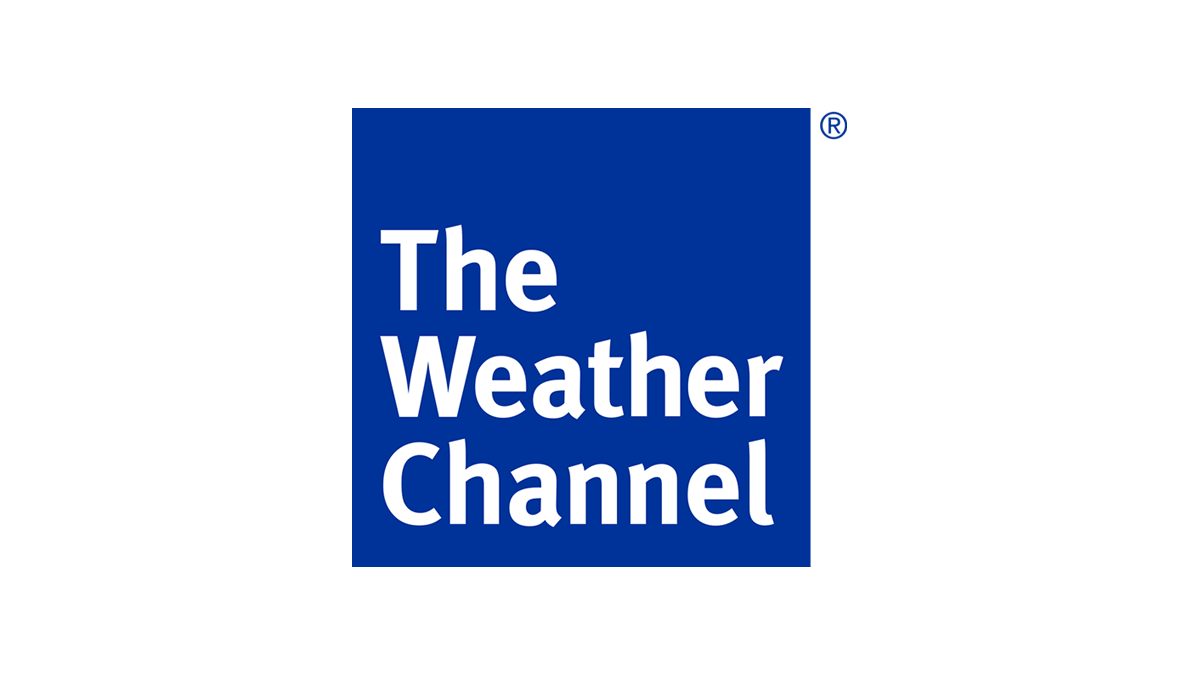





















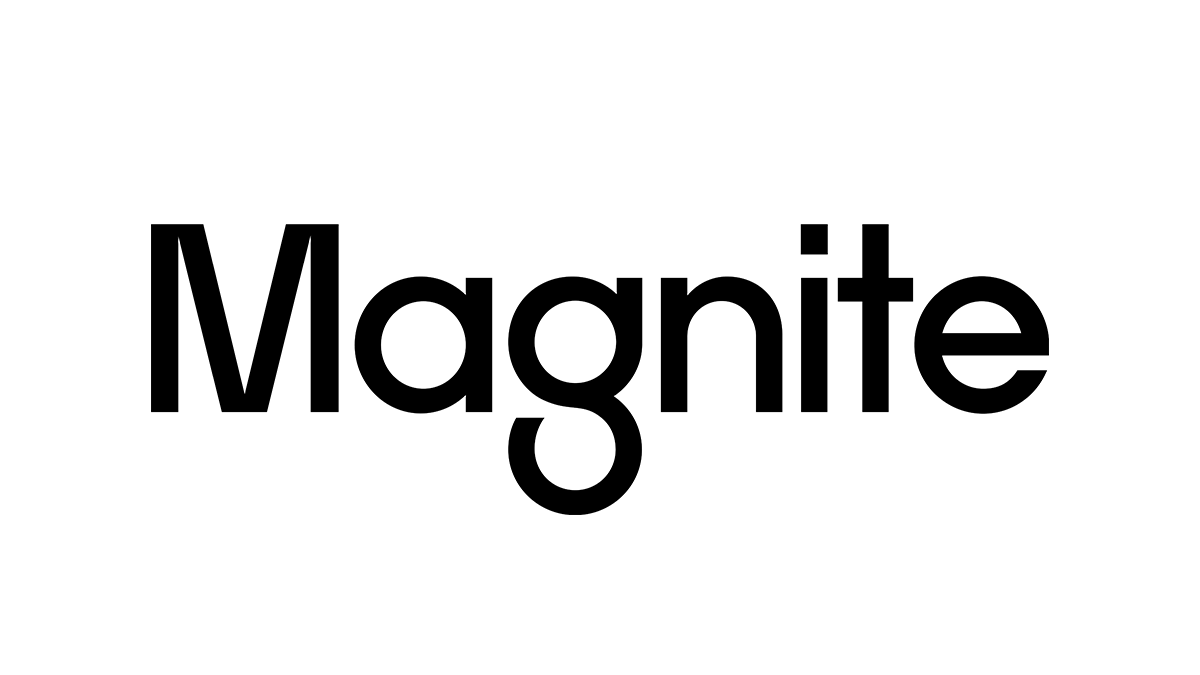



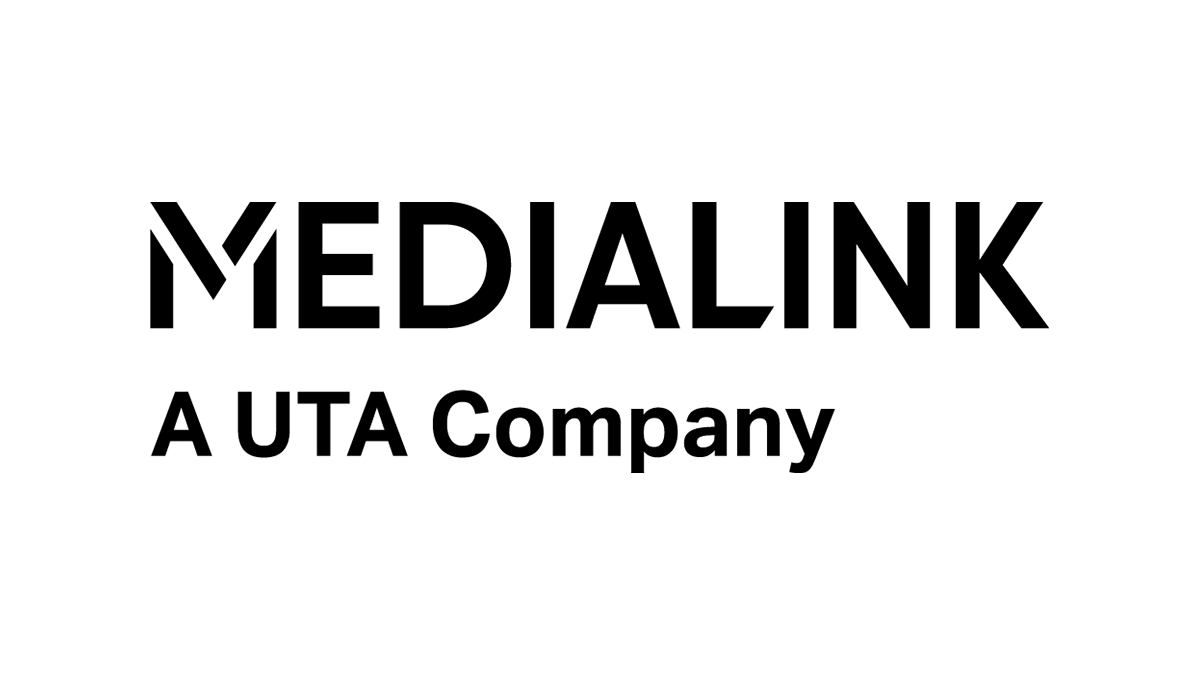













Let’s talk
What’s your weather strategy? To learn more about increasing campaign efficiencies and personalizing messages at the most relevant moments, contact our advertising experts today.
Contact usAs the pace of digital transformation continually quickens, all industries are challenged to keep up. Advertising is no exception. As advertising becomes increasingly digital, businesses need to find new advertising techniques and strategies that set them apart from their competitors. Current technologies offer advanced techniques that can give savvy firms the advantage.
What is an advertising strategy?
An advertising strategy is a comprehensive marketing plan for how your team will place your product or service in front of consumers and persuade them to buy. To make an advertising strategy effective, thorough research is required. This process includes having a deep understanding of the products or services you offer, your target audience, your competitors, and what your unique selling proposition (USP) is.
How to develop an advertising strategy
Although every organization has a slightly different advertising strategy with its own unique goals, there are some main components that should always be considered in development such as:
- Determining the target audience
- Setting key performance indicators (KPIs)
- Determining the steps needed to reach those KPIs
- Executing steps and strategies
- Testing new strategies, messaging, techniques or technology
- Measuring results
- Repeating or revising strategies based on learnings
5 cutting-edge advertising techniques
Developing an effective strategy requires an innate understanding of the advertising techniques that are shaping the industry today. Here are five cutting-edge techniques and strategies to consider for your next campaign.
1. Improve decisions at scale through AI advertising
Artificial intelligence (AI) is transforming the advertising industry and 52% of survey respondents1 say that AI will play a critical or very important role in their jobs over the next twelve months. Therefore, advertisers who are looking to boost their strategy would be wise to realize the benefit of AI in analyzing vast amounts of data to optimize campaigns and drive more impact.
Despite the massive amount of information available to advertisers, 64% struggle to measure KPIs accurately. With the loss of cookies and the increased pressure for privacy, it can be harder than ever to deliver relevant ads to the right people. AI can use contextual signals based on the content, weather and location to help advertisers make better decisions in terms of ad placements and creative.
AI advertising can help marketers and advertisers across a wide range of disciplines, including analytics, targeting, and personalization. Different forms of AI Advertising may include cognitive advertising, conversational marketing, and programmatic advertising. With AI, the possibilities are endless, and when used to make decisions in advertising strategy, can greatly help to scale efforts and improve ROI.
2. Interact with consumers through conversational marketing
A top use case for marketers looking to implement AI is providing highly targeted content to users in real-time. With the challenges that data deprecation brings, marketers are concerned about loss of consumer trust in marketing tactics, and loss of ad delivery precision.
However, conversational marketing can deliver hyper-personalized experiences, without the use of cookies or being intrusive. Conversational marketing is a method that engages consumers in dialogue-driven, interactive advertising experiences at a one-to-one level. It is a great way to interact with consumers in real-time while gaining unique customer insights that you can use in the future to better target your audience.
3. Achieve personalization through predictive targeting
Personalization is becoming increasingly important to consumers and marketers alike. Ninety-nine percent of marketers surveyed by Evergage agree that personalization has some sort of impact on the customer relationship and 78% agree that it has a strong or extremely strong impact.2
With personalization becoming increasingly necessary, marketers will need to think strategically about how they deliver on personalized experiences and stand out from competitors. Some constraints may include ever-changing privacy regulations and a loss of cookie targeting. One way to provide personalized experiences without cookies is through predictive analytics and targeting. A predictive advertising tool works by using the latest in AI technology to analyze relevant data and score users based on the probability of taking a particular action.
Predictive analytics can help anticipate consumer needs, enabling advertisers to save time and money by targeting the right audience the first time and putting ads in front of people who are likely to be interested.
4. Mitigate bias in advertising campaigns
Bias impacts nearly every decision we make, and in most cases this bias is unconscious. Positive or negative, these biases can become ingrained into the tools advertisers use, causing certain groups to become overlooked during campaigns.
Although CMOs and advertising executives strive to remain objective in their campaigns, bias can creep into the data being used and the algorithms deployed. However, AI and machine learning can also be leveraged to identify these advertising biases.
Our AI tools can discover subgroups that are being advantaged or disadvantaged during campaigns, so companies can take proactive steps in mitigating these stereotypes. Through The Weather Company, organizations can better scan for unconscious biases, so brands can more fairly target consumers across their entire advertising ecosystem.
5. Leverage weather targeting and weather-based ads
Also known as weather-triggered advertising, this AI-powered approach combines the power of weather’s ability to drive emotion and action with complex data sets like health conditions, product sales, and consumer activity, into an actionable solution that drives sales.
One way advertisers can see weather’s power to elicit emotions and affect buying behaviors is when you compare the response of an individual on a rainy day versus a sunny day. On a cloudy, rainy day, consumers may spend the day indoors, leading to increased foot traffic or online sales. If they venture outside, they may realize they need to buy an umbrella or rain boots. On the other hand, if it’s sunny, consumers may be more inclined to buy sunscreen or ice cream.
It’s also important to consider where in the world these ads are being placed. For example, New Yorkers may wear shorts and a t-shirt in 60-degree weather, while consumers in Miami may opt for a jacket and long pants. With weather-based ads, advertisers can put the right ads in front of the right people depending on the weather in their specific area and their unique buying behavior.
Learn more about The Weather Company
Whether you already have a strong advertising strategy under your belt or are looking to expand your techniques and stand out among competitors, The Weather Company can support your needs. With an array of AI-powered solutions that don’t rely on cookies, our solutions are designed for businesses looking to better predict future outcomes, automate complex processes and better optimize employees’ time.
Let’s talk
Let’s talk
What’s your weather strategy? To learn more about increasing campaign efficiencies and personalizing messages at the most relevant moments, contact our advertising experts today.
Contact us1 Marketing AI Institute 2021 State of Marketing AI Report, Drift.com.
2 2020 Trends in Personalization, Everage: A Salesforce Company.
The performance data and client examples cited are presented for illustrative purposes only. Actual performance results may vary depending on specific configurations and operating conditions.
What is programmatic advertising?
Programmatic advertising is the automated bidding and placement of ads on a given platform. Traditional ad placement involves a long, tedious process of negotiations, bidding, contracts, and requests for proposals. Programmatic, on the other hand, streamlines the process into mere seconds. How? Through the use of machine learning and AI to handle the sale and placement of digital ads.
More specifically, programmatic advertising uses historical traffic data and online targeting methods to put these ads in front of people who are the most likely to want to see them, which helps to improve conversions and ROI for your business.
Benefits of programmatic advertising
There are a number of benefits to using programmatic advertising in your ad campaigns, including:
Relevancy
Programmatic advertising helps ensure that ads placed in front of your target audience are relevant to their interests and preferences through superior targeting capabilities. Fifty-eight percent of advertisers note that the main drivers for their investment in programmatic are the ability to better use data and for the benefit of targeting efficiencies. Gaining access to premium inventory at scale ranked at third place in driving programmatic investments for advertisers, which saw substantial growth from 20% in 2020 to 50% in 2021.1
Real-time data and analytics
Advertisers can optimize their campaigns by gaining access to real-time data and reporting how their ads are performing at that moment.
Reach
Programmatic advertising allows users to choose from an abundance of platforms and websites for the placement of ads. Additionally, you have the option to advertise at scale, enabling users to use their resources more efficiently.
Conversions and ROI
While a lot of advertising methods focus on clicks, programmatic focuses on conversions. Clicks are certainly valuable regarding expanding reach, but they don’t matter much if they don’t turn into leads or conversions. With programmatic advertising, conversions can increase due to better ad placement.
Additionally, with advertisers reporting the need for greater control of inventory and at a lower cost, it’s not surprising that supply chain transparency ranks as their primary concern, seeing a significant increase over last year (60% in 2020).
How programmatic advertising works
Programmatic advertising distinguishes itself by automating the bidding and placement of ads. There are several components to this method of advertising, including the publication and advertiser’s side. Below are some key terms to know before getting started with programmatic:
What is the ad exchange?
An ad exchange is an online marketplace in which advertisers and publishers can bid on advertising space as well as buy and sell digital inventory. It enables advertisers to make the media buying process more efficient and cost effective since they don’t need to negotiate with publishers individually to place their media.
Today’s digital market happens in real-time with bids happening on the back-end while users load the page. This can expedite and simplify what used to be a long and tedious process of negotiating. However, there are some disadvantages to this model including the increased potential for ad fraud and difficulty in tracking which websites ads appear.
What is an ad network?
An ad network offers ad placements from a specific number of websites. It is a technology platform that connects publications to advertisers who want to purchase digital inventory. The ad exchange often features different ad networks in the auction.
What is a DSP?
Demand Side Platform (DSP) is an automated buying platform where advertisers go to purchase digital ad inventory. It allows buyers to manage multiple accounts on one platform.
What is the difference between an SSP and DSP?
DSP is the advertiser side of the ad exchange. SSP is the publisher side of the exchange.
Types of programmatic advertising
For advertisers, there are a few different types of programmatic advertising to choose from.
Programmatic guarantee
With programmatic guarantee, the advertiser is guaranteed ad impressions on certain websites as well as assured ad space on specific publishing sites.
Real-time bidding (RTB)
Real-time bidding automates auctions for online ad space, enabling advertisers greater control over costs and the channels and platforms where they want to publish.
Private Exchange Buying (PMP)
Privacy Exchange Buying (PMP) is a private auction for ad bidding versus a public marketplace. PMP allows publishers to choose which ads appear on their page and maintain exclusivity.
How to use programmatic advertising
Traditionally, ad placements consisted of the following steps:
- Advertisers offer bids for impressions
- Highest bidder wins the placement
- The ad is placed on the chosen website
- The user clicks the ad and it converts
On the other hand, programmatic advertising takes these steps and condenses them to work in an instant. Competing bids are calculated by algorithms and analytics in order to determine the most cost-effective bid and placement for your ad.
Examples of programmatic advertising
Industries using programmatic
A number of companies spanning industries are realizing the benefits of using programmatic advertising to optimize their campaigns. They include the following.
Pharmaceutical & healthcare
The pharmaceutical and healthcare industry can benefit from programmatic by using it to better target their customers while helping to maintain privacy compliance laws like HIPAA.2
Retail
As the retail sector continues to increasingly focus on providing customers a personalized experience, they are quickly finding the value in using data and AI to create optimized campaigns that may deeply resonate with their target audience.
Automotive
The automotive industry is quickly finding the value in leveraging data to optimize their campaigns and garner quick results. Programmatic advertising helps speed up the ad-buying process from end-to-end and gets your campaign in front of people ready to convert. Additionally, since the automotive sales cycle tends to be longer than other industries, programmatic can help keep your brand top of mind. Automotive ads that leverage programmatic campaigns can be an effective way to keep audiences engaged in between car purchases.
Challenges with programmatic
Ad fraud
Programmatic advertising has the potential to drive clicks and impressions that come from a bot rather than a human. This means a portion of your budget is going toward clicks and impressions that may lead to no results.
Brand perception
If not partnering with the right solution, it is possible for your programmatic ads to end up on less desirable or relevant sites. Your consumers don’t know that these ads were placed automatically and poor ad placement can affect your brand perception.
Budget
If your clicks and impressions are being driven by bots rather than a human, there is the potential to waste advertising dollars on behavior that drives no real results. However, Google is increasingly working on ways to detect this fraudulent behavior before it happens.
The Disappearance of Cookies
Cookies have been traditionally used to track users across various browsers and websites. However, with AI and machine learning, brands can still effectively reach their target demographic. Cookieless targeting relies on contextual data, such as accurate weather information, page information, and data science to target the right audience with the right message.
Getting started with programmatic advertising
Getting started with programmatic advertising is a relatively easy process that includes the following steps:
- Identify what your goals are
- Determine who your target audience is
- Select your DSP
- Set up your ad campaign
- Optimize your ad campaign using AI and analytics
Programmatic ad types offered through The Weather Channel
The Weather Channel has the following options available for programmatic placement
- Integrated marquee
- Integrated daily weather snapshot
- Integrated forecasts
- In-banner video
- Vertical video
- Video galleries
- Swipe/gesture
- Billboards
- Expandable rich media
- Dynamic weather
- Locators
With these options, advertisers have the ability to use dynamic creative to better deliver relevant experiences to customers on any platform, whether it’s The Weather Channel digital properties, OTT, or another aspect of your advertising ecosystem.
Programmatic: The future of advertising
Programmatic can offer many benefits to advertisers, but it is only one component to a robust and effective AI advertising strategy. As we look toward the future of advertising, we can expect a greater use of AI advertising tools. When these tools are combined with your marketing mix, it can help brands better tailor their messaging, place ads on the right platforms and allow you to engage with your consumers more effectively.
Let’s talk
What’s your weather strategy? To learn more about increasing campaign efficiencies and personalizing messages at the most relevant moments, contact our advertising experts today.
Contact us1 “Attitudes to Programmatic Advertising Report”, IAB Europe, October 2021.
2 Please note: Compliance applies to legal regulations (actual laws) not industry standards (although some industry standards are supported by legal regulations).
Advertising technology is rapidly advancing, opening up opportunities for advertisers to target their audience with highly personalized, relevant material that is more likely to convert. Dynamic creative optimization (DCO) is a key example, helping to uncover meaningful insights and achieve campaign success.
In this article, we’ll define dynamic creative optimization and explain how it works. Then, we’ll dive into the benefits of dynamic advertising and explore some case studies showing how dynamic creative can be used to increase conversions.
What is dynamic creative optimization?
Dynamic creative optimization personalizes advertisements toward specific viewers based on information about that viewer. For example, the ad may show different users different creative items based on their previous browsing habits or products added to their shopping cart.
Dynamic ads, because they are relevant and targeted, often outperform traditional static ads which appear the same no matter who is viewing them.
Why is dynamic creative optimization (DCO) important?
Consumers see thousands of ads each and every day. For this reason, it is very important for brands to actively engage customers through messaging and creative. DCO, or dynamic creative optimization, helps these same advertisers deliver more relevant and impactful ad experiences to these users.
In addition, DCO can also help improve the scale and efficiency of advertising. Instead of creating multiple versions of an ad to be placed on different locales, DCO does this automatically for them.
How does dynamic creative optimization work?
Dynamic creative optimization uses real-time analytics and testing to create hyper-personalized display ads. It begins by analyzing several data inputs (for example, the viewer’s geolocation, weather, device, shopping habits, browsing history, and more).
This data is fed to the DCO which automatically chooses key creative elements that are relevant to the viewer. With the elements in hand, the DCO algorithm then chooses how to display the ads in a way that has the right feel for the viewer. Powerful DCO solutions are able to then analyze how viewers respond to the ad, optimizing it further in real-time.
The benefits of dynamic creative optimization
DCO brings several benefits to the table, including the ability to:
Produce scalable, targeted campaigns
In an age of near-universal advertising and ad-blockers, creating ads that speak to your audience is necessary to cut through the noise. DCO makes it possible to produce personalized, relevant ads at any scale.
Optimize campaigns easily
Powerful DCO solutions are able to analyze consumer engagements in real-time and optimize campaign performance on the fly.
Automate processes
AI-driven creative optimization means you can reduce the time necessary to get started and allocate resources more efficiently.
Develop more effective campaigns
DCO helps you to deliver the perfect combination of elements that drive engagement and conversions.
Reduce bias
DCO makes it easier for marketers to test their assumptions, instead of relying on biases to create campaigns. However, bias can become embedded into the tools we use. Businesses like The Weather Company are committed to mitigating advertising biases through the advancement of AI tools that can segment groups in a more equitable manner. As these machine learning tools become more sophisticated, teams can further reduce bias in their advertising efforts.
How to use dynamic creative in a campaign
There needs to be a foundation of high-quality data to enable you to understand your customers, where they are, and so you can use data science to target them. To use dynamic creative efficiently, you need to consider the following three steps:
1. Create buyer personas with high-quality data
The first step is to build buyer personas for each segment that you are going to target. To do this, you need to analyze your data and learn the key characteristics of each group. For example:
- Demographic data – Age, gender, ethnicity, income, and so on.
- Geographic data – Country, region, and timezone.
- Behavioral data – Spending, browsing, and purchasing habits, as well as how the customer interacts with your brand.
- Psychographic data – Personality traits, hobbies, goals, values, and lifestyle.
This is just the beginning – there are many characteristics that might be important depending on your industry, product or service, and target segments.
The important thing is to build a picture of who your customers are, what their problems and priorities are, how you can target them, and how you can convince them to make a purchase.
2. Create multiple messages and ad elements
The next step is to feed the AI a set of assets. These assets could include product photography or videography, background elements, headline variations, and different voiceovers and calls-to-action (CTAs).
The more assets, the more variations are possible. The AI will then make use of advanced targeting data and predictive modeling to create unique experiences for each user.
The trick is to create compelling copy and CTAs based on the buyer personas you created in step one. Further, it’s crucial to stay on brand and align your messaging with your brand voice and audience needs.
3. Monitor performance and optimize campaigns
As the campaign continues, monitoring success is vital. Prior to launching your campaign, you should decide on the KPIs that will best describe whether your campaign is having success or needs to be optimized.
Using a powerful DCO solution means that the AI is able to self-train based on the highest-performing ad variations and improve performance across the board.
Industries that can benefit from DCO
DCO can benefit a large range of companies and organizations. The following industries can benefit from taking a dynamic approach to their advertising campaigns.
Automotive
With issues caused by supply chain disruptions, advertising executives are under increased pressure to make sure each dollar counts. Through DCO, automotive advertising campaigns can be personalized, while targeting users more likely to make a conversion.
Retail
Contextual signals matter in retail. Weather data can dictate the kinds of purchases someone makes, whether that be for ice cream, winter boots, or an umbrella. By leveraging location insights with weather information and AI advertising, retailers can deliver cognitive ads that will convert their audiences.
Healthcare
For healthcare advertisers, it’s important that ads don’t feel invasive, since patient data is highly personal. DCO can deliver personalized campaigns without relying on cookies or sensitive information.
The future of dynamic creative
Personalization matters in advertising. More than half of consumers1 noted that they are more likely to make a purchase from a company that provides personalized ads. Even with privacy regulations, brands need to deliver ads that are relevant to users.
By employing dynamic creative, brands can leverage contextual signals and weather-based targeting to deliver better ads without feeling invasive to consumers. In a world where advertising is becoming cookieless, dynamic creative optimization will become more important for brands who want to remain competitive.
Let’s talk
What’s your weather strategy? To learn more about increasing campaign efficiencies and personalizing messages at the most relevant moments, contact our advertising experts today.
Contact us1 The Power of Personalization report.
Contextual advertising uses various factors to determine which content is most relevant to users when placing an ad. It targets potential customers by relying on context such as the content of a webpage, location or weather. Machine learning can apply data science to targeting and take these pieces of information to deliver the right ad to the right users. For example, if a user is reading an article about wedding planning, the user might see an ad for wedding dresses on the page.
While advertisers have traditionally practiced behavioral targeting, that is, using a potential customer’s data surrounding their browsing and shopping habits, rising concerns about privacy have led advertisers to find alternative options. Advertisers no longer must rely on cookies or behavioral signals to deliver relevant ads. By using insights surrounding the context of the ad, companies can still create messaging that resonates with audiences. Companies are beginning to make this shift in how they approach their advertising, with contextual advertising projected to reach over USD 376 billion1 by 2027.
Why is context important in advertising?
Context is important because it provides advertisers with useful information about the type of content a user is interested in. Advertisers can then target them with an ad that allures the user with related content and messaging.
While relevant behavioral data expires as consumers navigate an ever-changing environment, using context tells advertisers what users are interested in right now rather than relying on past behavior. Advertisers can use this to their advantage by delivering highly relevant and timely ads.
Companies may also struggle with ever-changing regulations and attitudes toward privacy and tactics that use cookies to inform them about a user’s online behavior. With this shifting attitude, advertisers are realizing they may not be able to collect data in the way they once did. In fact, four out of five technology challenges that companies cite when trying to personalize their customer experience are related to data. For companies ready to embrace a cookieless world and an environment where consumer needs are constantly shifting, contextual advertising is a way forward.
How does contextual targeting work and how to get started?
Contextual advertising uses AI and deep-learning algorithms to analyze content like text, speech, imagery, and geolocation in real time. Predictive advertising tools analyze all of this data and the content a user is browsing to determine if a user will take a particular action like clicking your ad. The deep analysis provided by AI is like what a human brain would do when deciding where to place an ad manually, which helps ensure your ad placement is relevant, timely and of interest to the user. This also creates a more personalized experience for consumers, which is becoming increasingly important to consumers when deciding what brands they want to align with.
To get started, each contextual ad needs a unique landing page to help ensure there is a central place for driving conversions. Contextual advertising requires a high level of creativity and relevancy.
The importance of contextual advertising in a cookieless world
Contextual advertising is having a resurgence due to the impact of privacy laws like the GDPR and announcements made by Google to scrap third-party cookies—meaning advertisers will no longer be able to track users across multiple sites to target them.
With a desire for greater privacy online, contextual advertising is increasingly becoming a better option for advertisers. It’s privacy-friendly and you can still collect compelling data on consumers without the use of cookies. It may also help keep advertisers compliant while allowing for greater personalization—without being invasive.
What is the difference between contextual advertising and behavioral advertising?
Behavioral and contextual advertising doesn’t need to be an either-or decision; there’s a place for both. The main difference between the two is that contextual advertising targets context, that is, the environment in which the user is browsing and the topic and content of the page they’re viewing. On the other hand, behavioral advertising is more focused on the actions a user made before reaching the web page, whether it’s clicking a particular link, product page or article. Both kinds of advertising have their own benefits and can work together to achieve the desired result.
Benefits of contextual targeting in advertising
There are many benefits to contextual advertising for advertisers. Companies are beginning to implement tools to deliver higher levels of personalization based on the context of their advertisements such as weather, content and other factors. Below are some of the benefits of implementing contextual advertising across your organization.
Contextual advertising doesn’t require using cookies and personal information
It’s no secret that consumers are becoming increasingly wary of giving out personal information. In fact, in a recent survey from Startpage, it was found that 72% of Americans are “very concerned” to “extremely concerned” about their online privacy. Contextual advertising doesn’t require cookies to deliver relevant ads, which can help you spend your budget more effectively while targeting the right people.
Contextual advertising is easier to implement
Behavioral targeting is notorious for requiring vast amounts of data, which requires not only the right tools and technology to collect it, but a team to analyze it. Contextual advertising, on the other hand, focuses on predictions that AI makes based on trends and other insights that can make it an easier tool to implement.
Context can be more telling than behavior
Past behavior is not always relevant to present wants and preferences. And with so much change happening regarding lockdowns and the ever-evolving state of COVID-19, consumers are rightfully shifting their habits to adjust to the new normal. While advertisers may feel anxious to keep up with these changing shopping habits, we have developed the COVID-19 Triggers solution, which can help advertisers adjust their strategy based on the course of the virus and what’s happening now.
Changes in weather or other external factors can also affect purchasing decisions. For example, a snowstorm approaching the Northeast will influence purchase behavior. As a result, advertisers can highlight relevant products such as shovels, gloves and hats to those in the geographic area the snowstorm is approaching.
Advancements in AI have improved context accuracy
Due to technological advancements, AI has become increasingly smart about analyzing page content and placing your ad in front of audiences who are more likely interested in seeing it, which can increase your number of leads and conversions. AI also removes the burden that your team is responsible for by virtually eliminating the manual work involved with segmenting audiences by identifying patterns and learning from past tasks.
Better weather targeting can drive sales
The weather is another important, but sometimes overlooked, component of contextual advertising. While the weather may seem trivial, you can gain a lot of insight into how a consumer will behave based on one’s location and weather. For example, a forecast of 50 degrees will drive a different behavior in Massachusetts than in Florida. Weather Targeting turns the relationship between weather location, consumer behavior, and complex data sets into actionable, proven solutions for advertisers that don’t rely on third-party cookies.
How do you use contextual advertising
There are a number of ways companies can use contextual advertising to better reach their target audience.
Weather triggered advertising
By combining location data and accurate weather information, businesses can target their audiences based on specific trends. On warm days, an ice cream manufacturer may choose to advertise its products to a specific location. On rainy days, a business may use contextual ads to increase foot traffic or showcase its umbrellas. Weather triggered advertising combined with location data can be a powerful tool in driving purchase decisions.
Dynamic Creative Optimization
Platforms leverage AI to understand consumer engagement and other relevant data signals to determine the best creative for each user. Dynamic creative optimization (DCO) can be used on a variety of platforms, including The Weather Channel digital properties, OTT, and video.
Google AdSense
One of the most well-known contextual advertising examples is Google AdSense. Google robots serve ads automatically that are relevant to your users. For example, if you are running a movie review blog, AdSense may serve contextual ads that encourage users to buy movie tickets or sign up for movie streaming services.
In-game & in-video contextual advertising
Sony’s Wipeout HD was one of the first games containing in-game contextual advertising before the game loaded. Alternatively, an example of in-video contextual advertising would be YouTube ads for shampoo shown before video tutorials on cutting your own hair.
Native advertising
Native advertising is a form of contextual advertising. It uses sponsored ads that are designed to look like the native content on a website. This kind of advertising can use location and other data to personalize these ads.
Conversational marketing
Conversational marketing can be leveraged to deliver more personalized recommendations to customers. By leveraging a sophisticated solution, you can help customers find what they need while delivering more relevant messaging.
AI advertising
Machine learning can take various inputs to determine how likely it is that a user will take a specified action. This can be based on numerous factors, including weather data, location data, conversational insights, and the content of a page. AI can then determine how to engage the user to generate the best possible outcome.
Example of contextual advertising
CVS uses contextual ads to reach 42 million consumers in moments
CVS came to The Weather Company looking to engage with consumers in high-risk flu areas through contextual ads. The goal of the campaign was to drive flu-shot vaccinations to help prevent people from getting sick.
With millions of Americans at risk of contracting the flu, CVS’s sponsorship of the AI-enabled Flu Insights tool on The Weather Channel app was an optimal method for CVS to drive contextual relevance. Furthermore, the solution effectively connected with consumers when and where it mattered.
Through the Flu Insights sponsorship on The Weather Channel app, CVS reached millions of consumers in critical planning moments. Results included 42 million unique visitors, 644 million total ad impressions, and over 77% of module clicks via “Find Your Local CVS” messaging.
Final thoughts
The Weather Company offers a suite of contextual advertising solutions that are designed to automate complex processes, predict future behavior and optimize employees’ time—without the use of third-party cookies. Contact us to learn more about AI in advertising.
The performance data discussed herein is presented as derived under specific operating conditions. Actual results may vary.
All client examples cited or described are presented as illustrations of the manner in which some clients have used The Weather Company products and the results they may have achieved. Actual environmental costs and performance characteristics will vary depending on individual client configurations and conditions. Contact The Weather Company to see what we can do for you.
Let’s talk
What’s your weather strategy? To learn more about increasing campaign efficiencies and personalizing messages at the most relevant moments, contact our advertising experts today.
Contact us1Global Contextual Advertising Industry, January 2024.





